THE BOLD AND THE BEAUTIFUL
Gretchen Albrecht
Stephen Bambury
Brett Graham
Simon Morris
Denis O'Connor
Elizabeth Thomson
Boyd Webb
13 December 2013 - 1 February 2014
The 2013 end of year show introduces Two Rooms’ new artists, Gretchen Albrecht and Boyd Webb, alongside the work of five established senior NZ artists.
With no prescribed medium or theme, there is nonetheless an emphasis on both formal and physical qualities – abstract geometries and rhythmic patterns of proportion, scale, shape, line, colour, and texture. Cinematic in scale, the work shares a rich visual palette that relates to the physical world as much as the artists internal landscapes.
Gretchen Albrecht’s new work combines a sensuous colour palette with geometry, continuing the artist’s investigation into the endless possibilities of abstraction. A fluid, roughly oval-shaped vortex with two slender horizontal geometric lines, bleeds out towards the edges of the rectangular linen canvas. The oval, a recurring formal motif, maintains continuity with the artist’s earlier paintings.
The tactile quality of the work with its assured swirling brushstrokes resonates with allusions to the inward sense of order and underlying rhythms of nature, creating work that revels in the joy of painting.
Stephen Bambury’s paintings have an aesthetic dialogue between content of form and the history of iconography with the materiality of the subtle and luminous surfaces. These paintings are as concerned with re-presenting the history of nonobjective art as with their potential for meditation and philosophical speculation.
The works in the exhibition also investigate Austrian philosopher, Ludwig Wittgenstein’s phenomenology of colour, in particular transparency and the colour white. Transparent quadrangles hover enigmatically over the vertical and horizontal bars of the simple geometric form of a single white cross on a white plane.
“We do not want to establish a theory of colour (neither a physiological one nor a psychological one) but rather the logic of colour concepts. “ L. Wittgenstein
The painting SC119166 has a dominant orange cross interacting with four small black rectangles on a cream plane, The geometric forms have slipped alignments, vertically and horizontally in relation to one another. There is an implied depth of space, as we perceive yet another cross, black, suspended between the planes of white and cream.
Brett Graham: Uru: West
The ability to distill complex cultural ideas into formally strong and beautiful sculptural forms is the distinguishing feature of Brett Graham’s work. For all its formal simplicity the intricately carved wall relief, coated in black lacquer, this new work has more complex conceptual dimensions.
Symbolising the western hemisphere, the radiating grooves converge in the centre, mapping a particular location and place. The convex form references traditional Maori belief in a protective dome over the world, but the metaphor of a protective shield intimates also feelings of disquiet and anxiety with the volatile political and environmental state of the world today.
These layers of meaning allow the viewer to engage with Uru on an aesthetic, personal and political level.
Simon Morris’s recent work reveals tonal progressions of light. The sequential relationship of the schematic pattern of vertical striations, the restrained monochromatic range, the visual tension between repetition and variation and the materiality of the canvas create a level of optical vibrancy. The subtle differences in intensity, the delicate nuances of diluted pigment combined with Morris’s carefully calculated restrictions of space and time creates work that is evocative, poetic, and contemplative with the humility of the handmade.
Denis O’Connor
These two works are from a suite of recent drawings on collaged fragments of roof slate that mimic chalk-on- blackboard (and therefore are instructional and diaristic in tone.)
- “The WHISPERANTS”
A Silverware Romance.
- A page from an imagined glossary of tableware, host and guest. Images of antique silverware are plundered for their “metaphorical” suggestiveness, conjuring up a theatre of the Dining Table, or a guide to the inaudible liaisons of service and hospitality. (A work for the festive season.)
- “THE VERBS.”
From THE TANGLER, chapter 3.
The artist is sitting and ponders the weight of things.
The artist is stepping forward; careering downhill.
The artist is walking on water, imagining flight
The artist is hesitating.
Elizabeth Thomson’s new work The Cascades, recalls the artist’s childhood memories of living in and exploring the steep, untamed bush-clad environment of the Waitakere Ranges. (Waitakere means deep pools). The magic of the Cascades Falls – the physical sensation of bathing in translucent pools of pure cool water, wading with smooth stones underfoot and keeping a watch out for eels – is lodged in her memory of early years in Titirangi.
This work is evocative of those early experiences. The painterly photographic quality with the varying tonal densities and colour fields in The Cascades, combined with the 3-dimensional grid pattern of the shaped substrate, creates surface tension. Vortices of spiraling patterns suck the viewer into the interior, implying infinite space.
Boyd Webb’s laminated photographic still life “ White “ is a close up of a sculptural silk flower magnified through the artful eye of the camera. Given Webb’s propensity for double entendre, the image, on closer scrutiny, is not what it seems. This fiction “creates rather than re-creates the world: the erotically charged image doesn’t capture reality, it fabricates it.”
The deathly beauty of the fully opened fragile white petals, symbolic of innocence and purity, are stained with crimson tinges of colour on their outer edges. The composition is a drama of sexual desire and its fulfillment – the white petals female genitalia, the orange stamens a frenzied swarm of spermatozoa competing to fertilize the egg. It looks like a fight to the death.
Paula Savage
December 2013
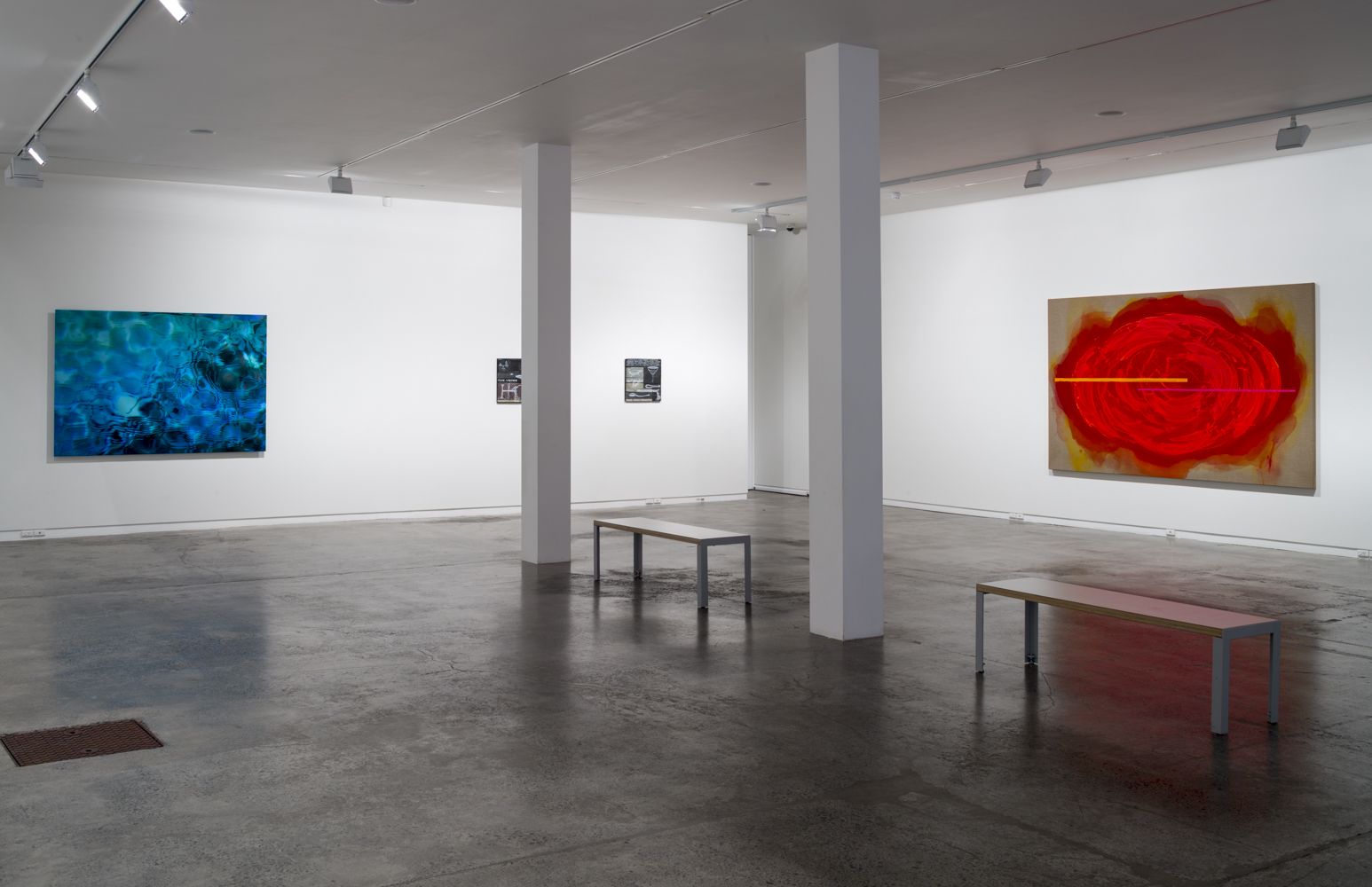

Corona (Roseate)
acrylic and oil on Belgian linen 1760 x 3000 mm

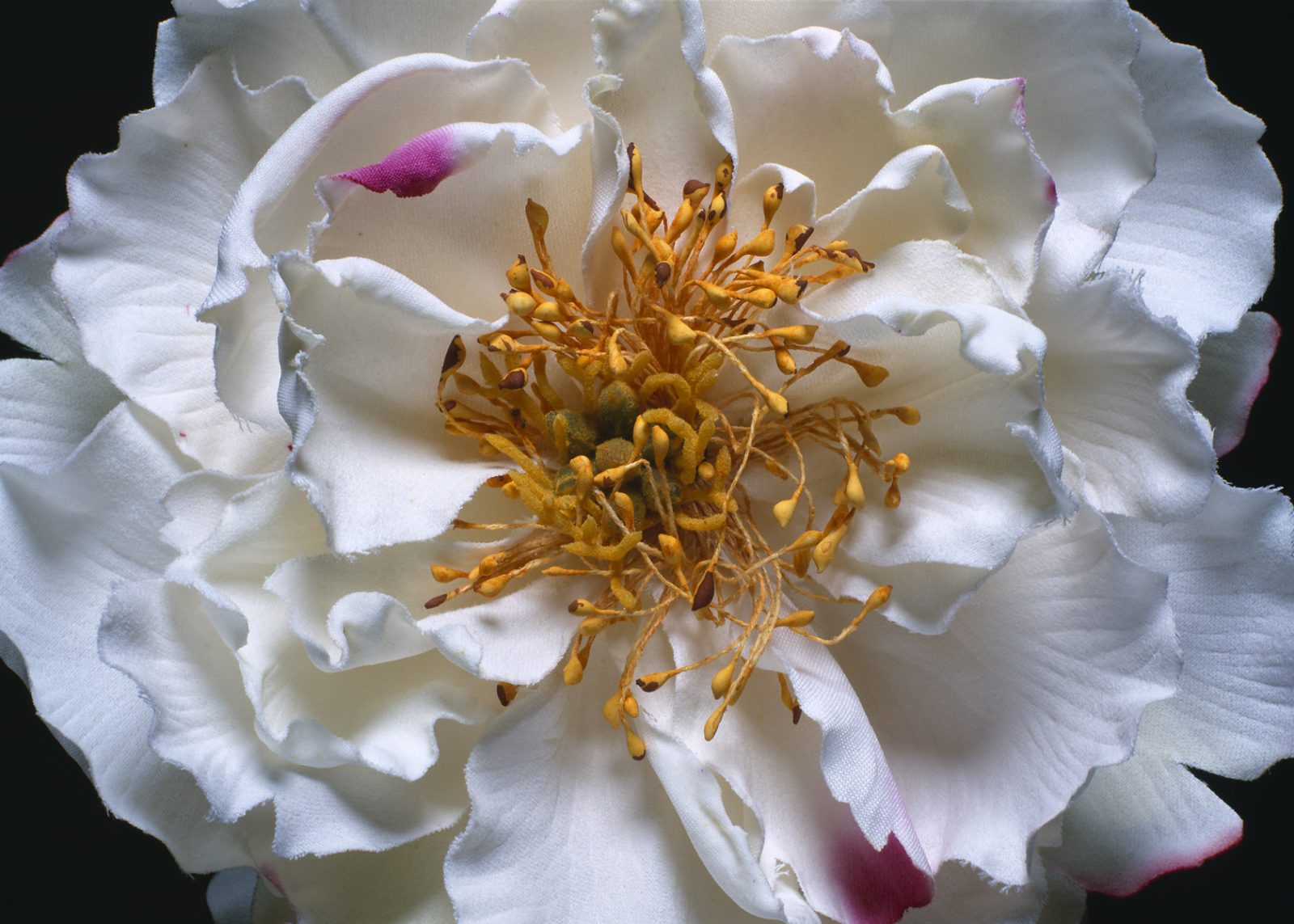
cibachrome on dibond
1200 x 1590 mm
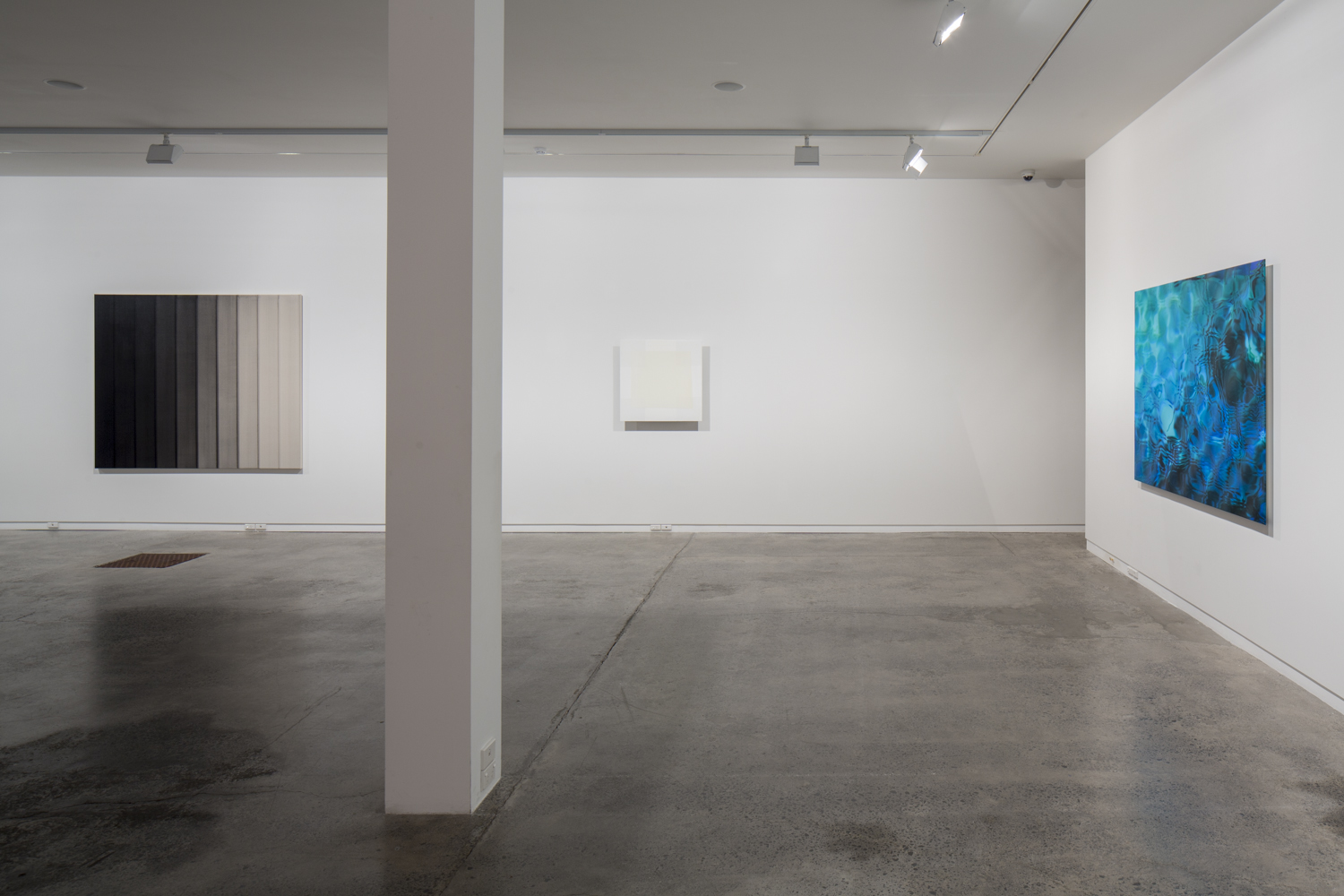

The Cascades
cast vinyl film, lacquer, contoured wood panel 1410 x 2030 x 50 mm
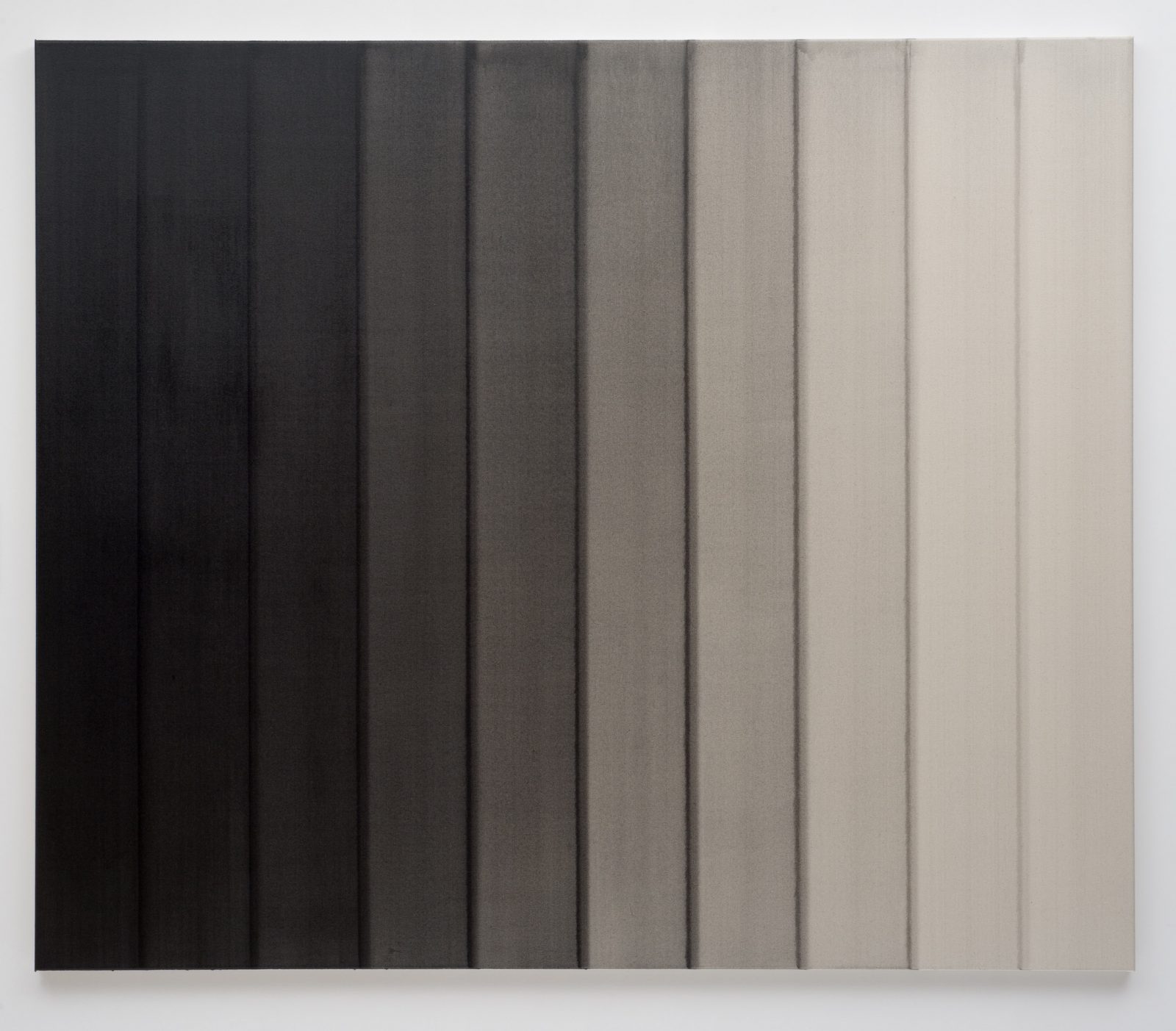
Acrylic on canvas
1700 x 2000mm
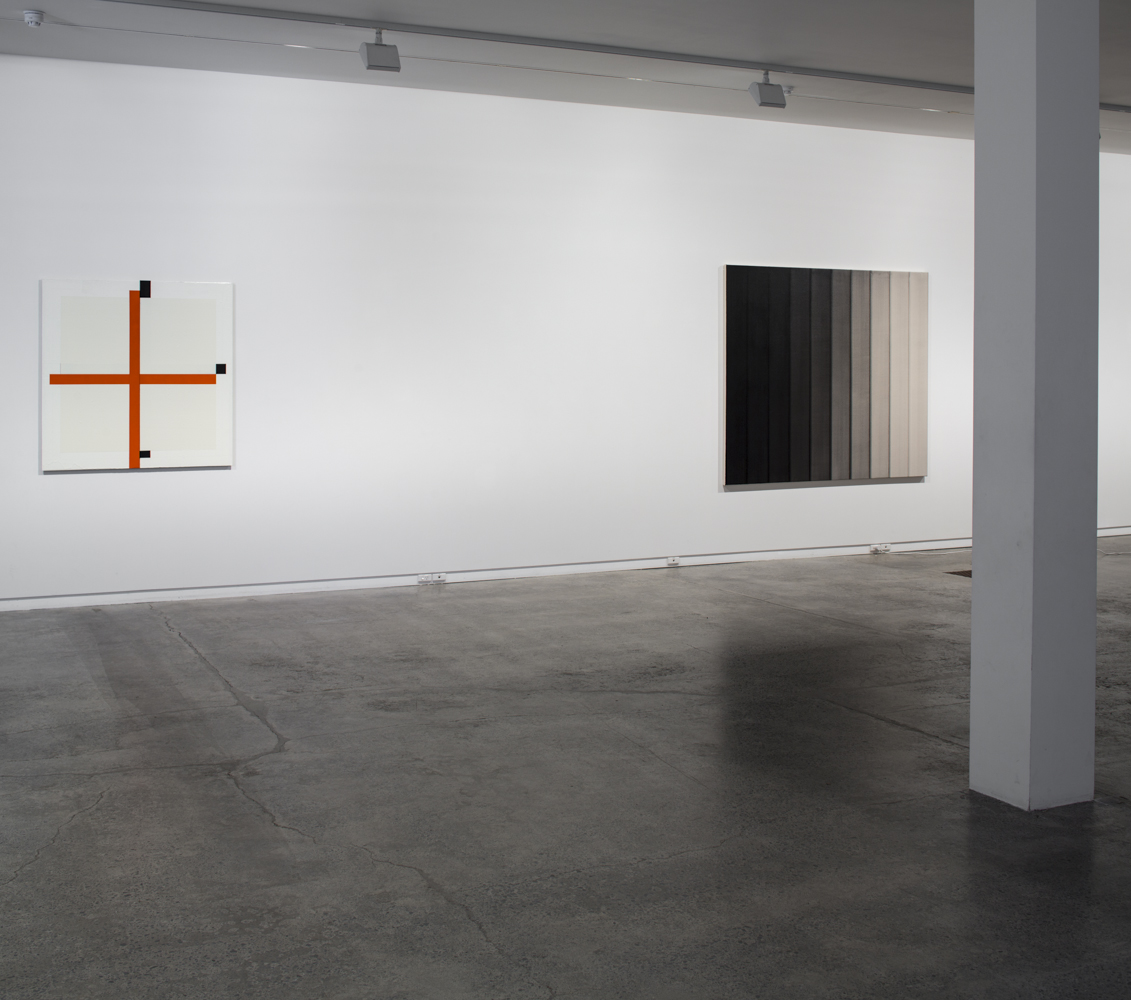
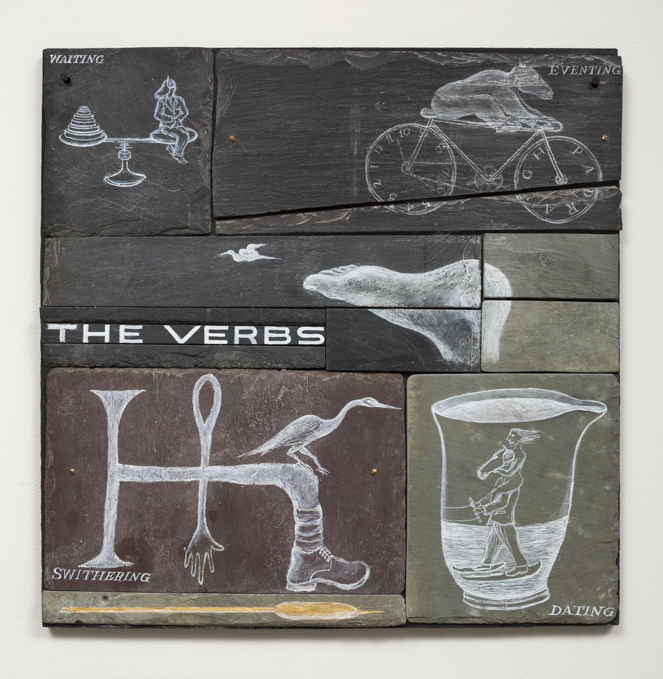
The Verbs
collaged roof slate
500 x 500 mm
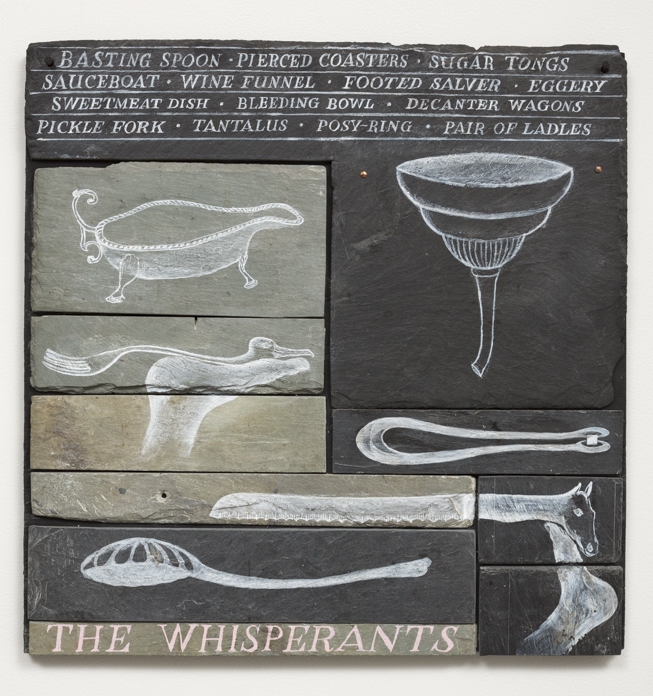
The Whisperants
collaged roof slate
500 x 500 mm
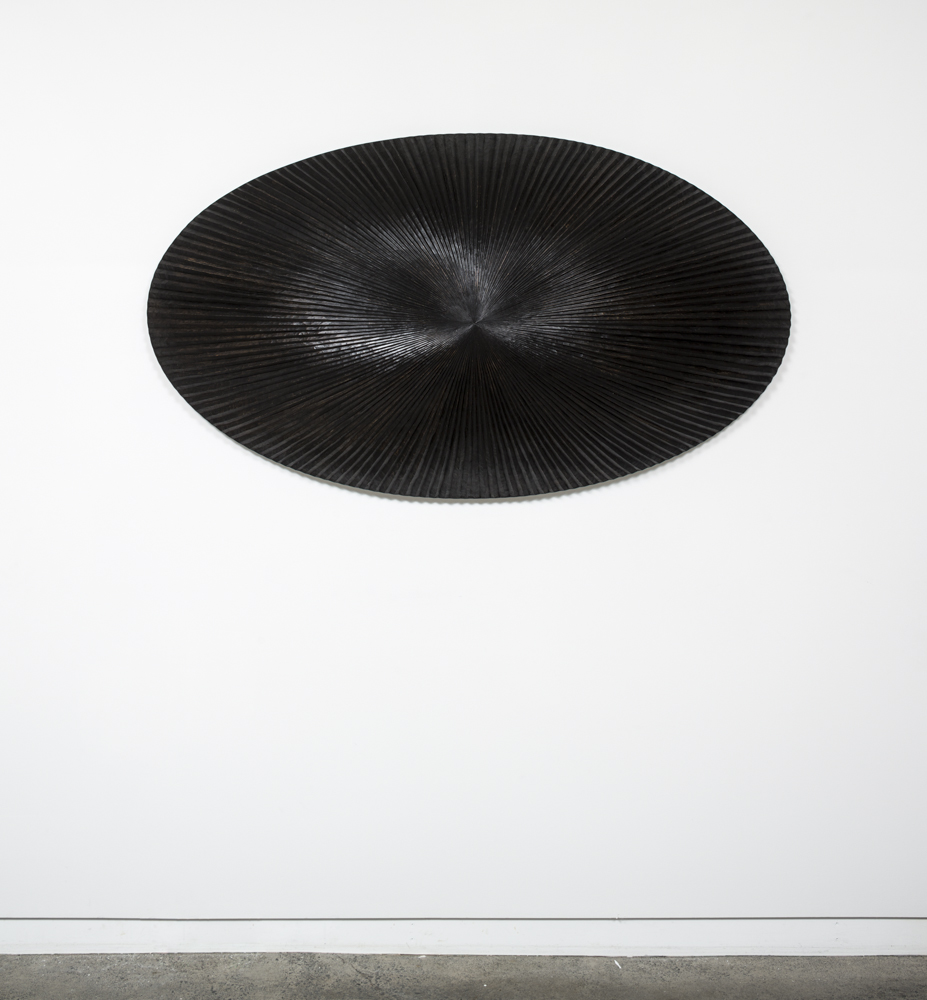
Uru
hand carved beech 1500 x 880 mm